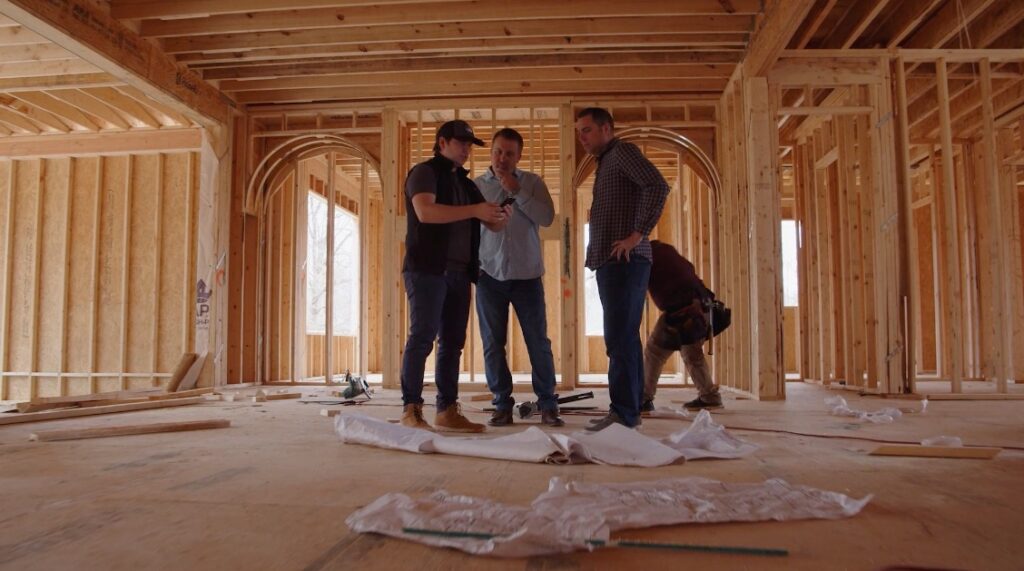For construction business owners, understanding the different types of subcontractors and their roles is crucial for the smooth execution of any construction project.
This article lists various kinds of subcontractors, differentiating them from general contractors, and provides a comprehensive list and examples to enhance understanding and efficient management.
Difference Between General Contractor and Subcontractor

The construction industry operates with a hierarchy of roles, and understanding the distinction between a general contractor and a subcontractor is fundamental.
- A general contractor is the primary contractor hired by the client to oversee the entire construction project. They are responsible for the day-to-day oversight of the construction site, management of vendors and trades, and communication of information to involved parties. The general contractor is the project’s point person, responsible for sourcing materials, labor, and equipment.
- Subcontractors, on the other hand, are specialists hired by the general contractor to perform specific tasks. They work under the guidance and direction of the general contractor and are not in direct contact with the client. Subcontractors are typically skilled in specific areas of construction, such as electrical work, plumbing, or roofing.
Read further: How to Deal with Under-Performing Subcontractors
List of Subcontractors

In a typical construction project, several subcontractors are involved, each specializing in different aspects of the project.
Here’s a list of common types of subcontractors in the construction industry:
- Electrical subcontractors specialize in electrical wiring, fixtures installation, and ensuring compliance with electrical codes. They are crucial for both residential and commercial projects, ensuring electrical systems are safe and efficient. Electrical subcontractors must stay up-to-date with the latest electrical standards and technologies.
- Plumbing subcontractors handle the installation and maintenance of water, sewage, and drainage systems. They play a vital role in designing and implementing systems that meet health and safety standards. Plumbing subcontractors also often provide essential repair and maintenance services post-construction.
- HVAC (Heating, Ventilation, and Air Conditioning) subcontractors focus on installing and maintaining heating and cooling systems. They ensure indoor environments remain comfortable and air quality standards are met. HVAC subcontractors are also instrumental in implementing energy-efficient solutions.
- Roofing subcontractors specialize in roof construction, repairs, and waterproofing. They must understand various roofing materials and techniques to ensure durability and compliance with building codes. Roofing subcontractors are essential for protecting buildings from weather elements.
- Concrete subcontractors expertise in laying foundations, constructing walls and floors using concrete. They are pivotal in ensuring the structural integrity of a building. Concrete subcontractors must be proficient in different concrete types and their appropriate applications.
- Carpentry subcontractors specialize in woodwork, including framing, cabinetry, and finishing. Their work ranges from structural work like framing to aesthetic aspects like trim and molding. Carpentry subcontractors often work closely with designers and architects to realize specific design elements.
- Painting subcontractors are responsible for interior and exterior painting, along with surface preparation. They must have a keen understanding of different paint types and techniques suitable for various surfaces. Painting subcontractors play a significant role in the aesthetic and protective aspects of a building.
- Flooring subcontractors install various types of flooring, such as tile, carpet, or hardwood. Their expertise is crucial in providing durable and aesthetically pleasing floor solutions. Flooring subcontractors need to be skilled in different installation methods and materials.
- Masonry subcontractors work with brick, stone, and concrete in building structures. They provide essential skills in constructing durable and visually appealing walls and features. Masonry subcontractors are key in ensuring structural stability and longevity.
- Landscaping subcontractors focus on outdoor work, including planting, garden design, and hardscaping. They enhance the aesthetic appeal and functionality of outdoor spaces. Landscaping subcontractors also contribute to the ecological sustainability of a project.
Subcontractor Examples

To further illustrate, here are some examples of subcontractor roles:
- A roofing subcontractor might be engaged to install a new roof on a building. Their work includes selecting appropriate materials, ensuring proper insulation, and guaranteeing the roof’s integrity against weather conditions.
- An electrical subcontractor would be responsible for the installation of all the electrical systems in a building, from wiring for lighting to complex electrical systems for smart buildings.
- A plumbing subcontractor ensures that all the piping and water systems are correctly installed and functional, including the installation of fixtures like sinks and toilets.
Conclusion
Understanding the various types of subcontractors and their specific roles is vital for construction business owners.
This knowledge helps in effectively managing a construction project, ensuring that each aspect of the project is handled by a specialist, thereby improving efficiency and quality of the final construction.
This article aimed to provide construction business owners with a comprehensive understanding of the types of subcontractors in the construction industry, highlighting the difference between general contractors and subcontractors, and offering a detailed list and examples of subcontractor roles.
This information is instrumental in achieving successful project outcomes and maintaining high standards in the construction business.







